25 Interesting Facts You Didn’t Know About Barcelona
It’s true that Barcelona is famous for its sunny blue skies, stylish Mediterranean vibe, and quirky architecture, but did you know the city is also a cannabis smoker’s paradise? Or that is home to the biggest metropolitan park in the world?
The list below explores 25 interesting, yet little-known facts about Barcelona.
…is the only city in the world awarded a Royal Gold Medal for architecture by Royal Institute of British Architects
Although the medal is usually given to one or a group of architects, Barcelona is the first and only city on the planet to receive this honor.
…had no beaches until the 1992 Olympics
Nowadays, there are 7 blue-flagged beaches dotting the city’s 4.5 km coastline. Not to mention it has been voted the “Best Beach City” by National Geographic.
…is home to the busiest pedestrian street in Spain
Located in Barcelona’s Ciutat Vella (Old Town), the shopping mecca Portal de l’Àngel is not only one of the most expensive streets in Spain, but also the country’s busiest walkway, with an average of 150,000 people walking down it daily!
…is older than Rome
One theory about the origins of Barcelona says the city may have been founded by Hercules, 400 years before Rome was built, but the truth is, no one really knows…
…is one of the world’s major cities where smoking cannabis is legal
Home to over 700 cannabis clubs, it’s no surprise Spain is often referred to as “Holland of the South”. More than a half of these clubs can be found in Barcelona, making the city a smoker’s haven. However, these “Asociaciones Cannabicos” are only intended to Spanish residents and getting a membership is not the easiest.
…is the most visited city in Spain
Barcelona comes 4th on 2016’s ranking of Europe’s most visited cities, after London, Paris, and Istanbul, yet before Rome, Milan, and Amsterdam. With over 8.20 million international visitors per year (2016), the Catalan capital is also the 12th most visited city in the world, surpassing Taipei (15th) and Shanghai (19th).
…is the biggest city on the Med
Barcelona covers an area of 101.4 km2 and has a population of 1.602 million (2014), which makes it the largest city on the Mediterranean Sea, and the second largest in Spain, after Madrid.
…gave the world the international book celebration
Every year, on 23rd April, Barcelona celebrates the patron saint of Catalonia with roses and books.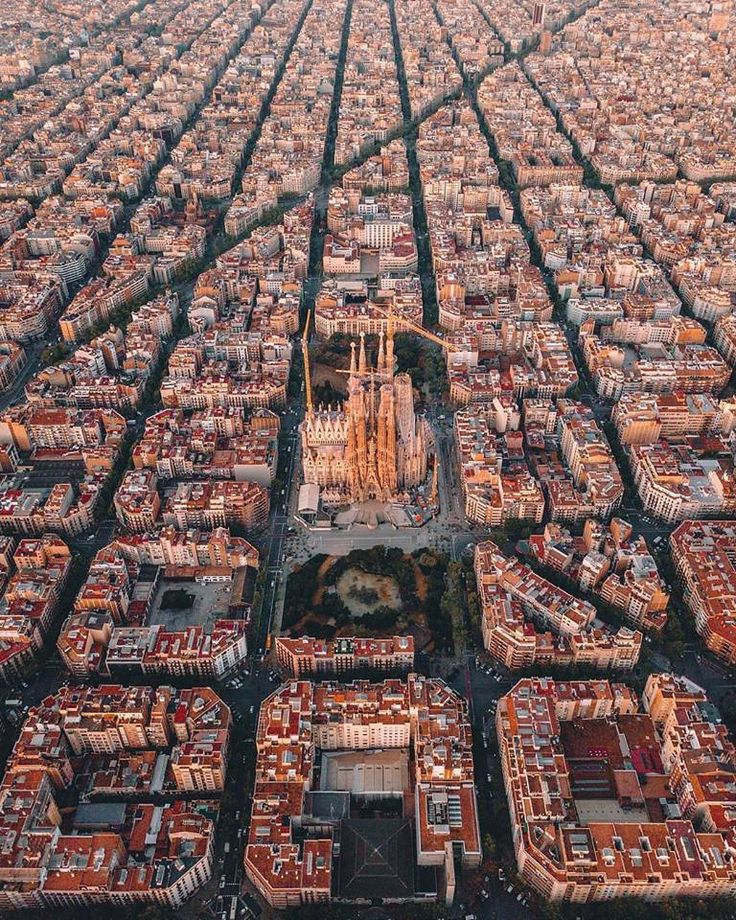
…could have been home to the Eiffel Tower
That’s right, if everything had gone according to Gustave Eiffel’s initial plan, Paris’ most famous landmark would now be in Barcelona. Unfortunately, Spain rejected the architect’s project, deciding that it was too “radical” and did not fit the city’s aesthetics.
…plays host to the biggest and busiest cruise port in Europe
There are nearly 3 million cruisers passing through the 7-terminal cruise port of Barcelona each year, making it the 6th busiest in the world and no.1 in Europe.
…accommodates the first beach ice bar in the world
Opened in 2007 on Barcelona’s El Somorrostro beach, Icebarcelona is the world’s first ice bar located on the beach.
…is home to the largest football stadium in Europe
Covering a surface area of 55,000 square meters, Camp Nou, FC Barcelona club’s home stadium, has a capacity of 99,354 people and is not only the largest football stadium in Europe, but also the 2nd biggest in the world, after Rungrado May Day Stadium in Pyongyang, North Korea.
…has 68 parks
More than 10 percent of the city is covered by urban parks, and the surface grows about 10 ha every year, translating into a staggering 18.1 square meters of park area per inhabitant.
…loves neither flamenco nor bullfighting
Although world-famous flamenco artists can be seen regularly performing in venues across Barcelona, this traditional Spanish art form is not so much appreciated by Catalans, who have their own native dance – the sardana. As for bullfighting, this was banned in Catalonia in 2010.
…prides itself with the largest metropolitan park in the world
With an area of 84.65 km², Barcelona’s Parc de Collserola is the largest metropolitan park in the world – 22 times larger than Central Park in NYC, if you were wondering.
…counts 55 museums
Surprisingly, the most visited is neither the spectacular Fundació Joan Miró, nor the art-filled MNAC, not even the state-of-the-art Museu d’Art Contemporani de Barcelona (MACBA), but the beloved FC Barcelona Museum, with over 1.
…has more than 20 Michelin-starred restaurants
Expect insanely creative chefs, an haute take on tapas, and the best of old and new Catalan cuisine.
…played an important role in determining the meter
In 1792, French astronomers Jean Baptiste Joseph Delambre and Pierre François André Méchain managed to calculate the distance between the North Pole and the Equator using the measurement of the meridian arc distance between Dunkirk and the fortress on Montjuïc in Barcelona, as well as the latitude of the two cities. This is how the first prototype meter was determined.
…is among the world’s most bike-friendly cities
Barcelona’s 180 km of bicycle lanes along with one of the most successful bike-sharing programs in the world, Bicing, make the Catalan capital one of the most bike-friendly cities in the world. It currently ranks 11th in the 2015 Copenhagenize Index.
…is home to one of Europe’s most powerful supercomputers
Housed in a former 19th-century chapel, which now functions as Barcelona Supercomputing Center, MareNostrum is the largest supercomputer in Southern Europe and the 93rd fastest in the world.
…plays host to one of the planet’s oldest shops and museums specializing in magic
Established in 1881 at Carrer de la Princesa 11, in Barcelona’s Born district, El Rei de la Magia is one of the world’s oldest magic shops and museums.
…is one of the most LGBT-friendly cities in Europe
Madrid may have the largest gay community in Spain and the gayest neighborhood on the planet (Chueca), but Barcelona, with its anti-homophobia law adopted in 2014, sunny Mediterranean climate, and vibrant LGBT club scene and festivals, is no doubt Europe’s gay summer party hotspot. Plus, it’s only 35 km northeast of Sitges, one of the top LGBTQ destinations worldwide.
…is the only city in Europe where you can admire a public display of funeral carriages
Home to Europe’s only public display of funeral carriages, the Museu de Carrosses Fúnebres at the Montjuic Cemetery stands as evidence that the dark side of Barcelona is as fascinating as its sunlit facades.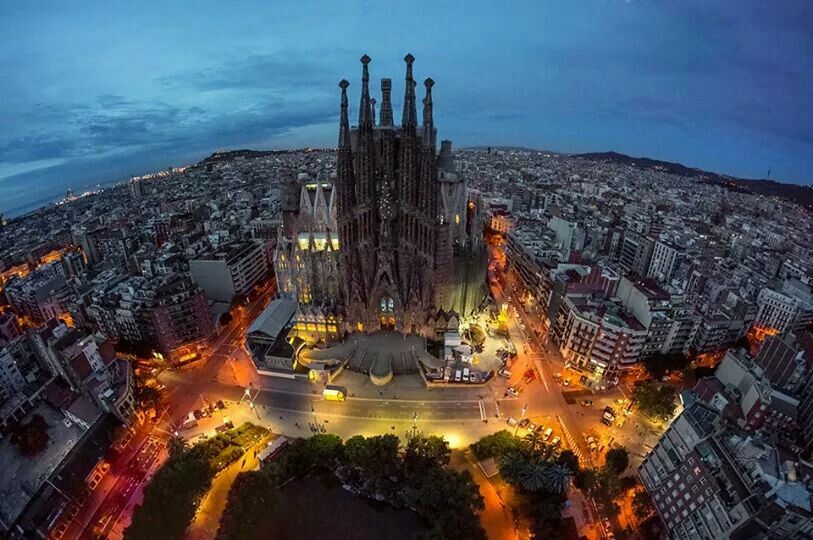
…has become the first city in the world to gain the “Biosphere World Class Destination” certification
This recognition is a testament to Barcelona’s commitment to sustainability in numerous fields, including transport, accommodation, as well as food & drink.
…boasts 9 UNESCO-protected monuments
Two of them – Palau de la Música Catalana and Hospital de Sant Pau – have been designed by Modernista architect Lluis Domenech i Montaner, while seven belong to Antoni Gaudi, Barcelona’s most famous son. These are part of the “Works of Antoni Gaudí” list and include Park Güell, Palau Güell, Casa Milà, Casa Vicens, La Sagrada Família, Casa Batlló, and the Crypt of the Church at Colonia Guell.
15 fun facts you may not know about Barcelona
Did you know that Barcelona is the most-visited city in Spain? With about 1.6 million inhabitants, the number of visitors to the city far outnumbers the people living in it. What do you know about the city? Along with its amazing architecture, perfect Mediterranean location, wonderful tapas and wine or cava, there are a few facts about Barcelona that you may now know.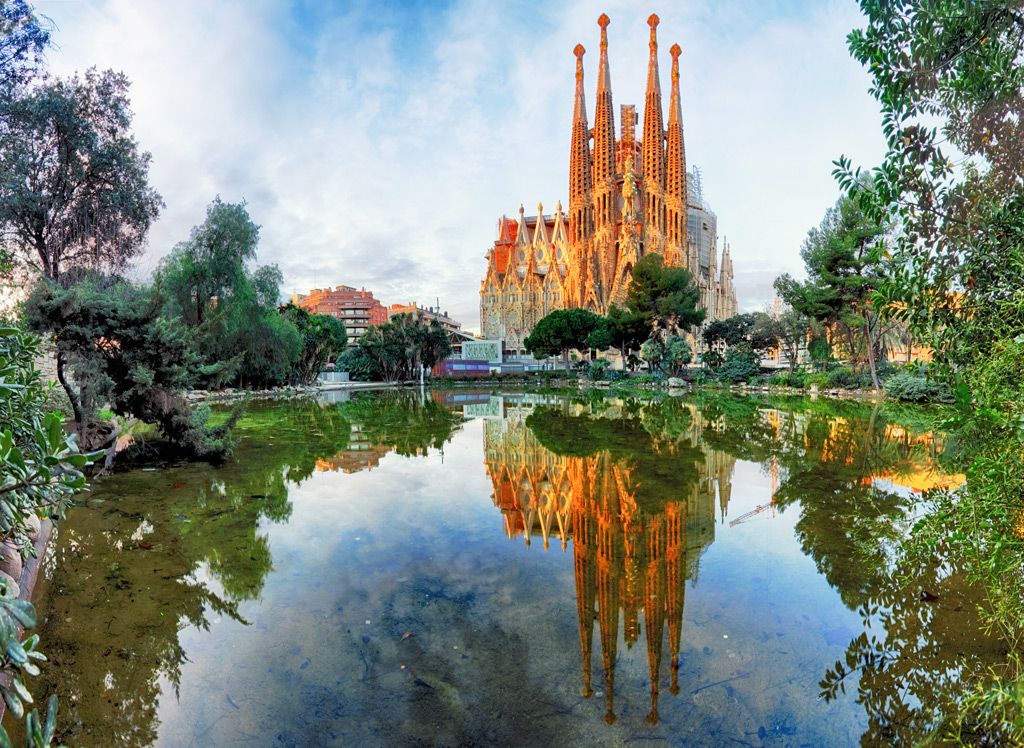
A bird’s eye view of l’Eixample, photo via @lensaloft
1. Barcelona has 2 official languages
Although Barcelona is located in Spain, it is the capital of Catalonia. Spain is divided into 17 different autonomous regions (or comunidades autónomas) and Catalonia (Catalunya) is one of them. Spanish and Catalan (which is not a dialect, but a completely distinct language from Spanish) are the languages you will see on transportation signs, menus, in public places and museums all over the city. You can learn more about the different languages of Spain here.
2. Picasso has roots in Barcelona
Pablo Picasso, the famous Spanish artist responsible for introducing Cubism to the world, spent his formative years in Barcelona and studied at its School of Fine Arts. There is a Picasso museum in the Born neighbourhood of Barcelona which has over 4,000 of his works on display.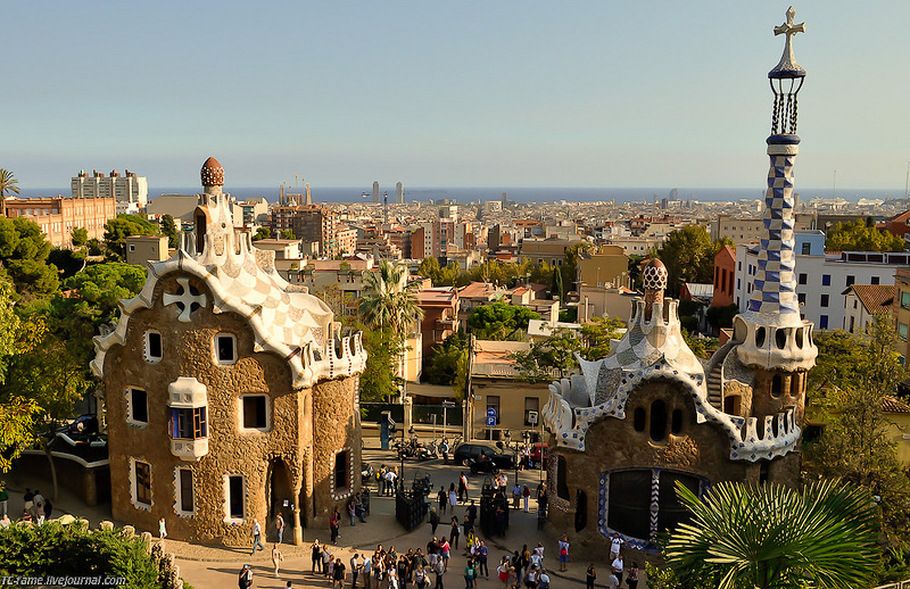
3. The famous Basilica of the Sagrada Familia has taken longer to complete than the Egyptian Pyramids
Speaking of architecture, construction of Catalan architect Antoni Gaudí’s magnum opus Sagrada Familia began in 1882. To this day, the basilica remains unfinished, but there has been a completion date set that coincides with the hundredth anniversary of its architect’s death (who is, surprisingly, buried inside!). Conversely, Egyptologists estimate that the Great Pyramids of Giza were constructed with ancient tools in the span of 10-20 years.
Antoni Gaudí’s Basilica, the Sagrada Familia, is still incomplete, photo via @igor.kornachev
4. Barcelona is the only recipient of the Royal Gold Medal for architecture
In 1999, Barcelona became the only city to be awarded the prestigious Gold Medal for Architecture by the Royal Insitute of British Architects.
5. There are over 20 Michelin starred restaurants in Barcelona
Spain has started to become a popular destination for food tourism. Mild temperatures and almost 5000km of coastline make it impossible not to cook with fresh, quality ingredients and seafood. The Catalan capital boasts a number of top chefs including brothers Albert and Ferran Adrià, Joan Roca and Cristian Escribà.
6. Barcelona is home to 9 UNESCO World Heritage Sites
Of these nine important sites, seven were of Gaudí’s making. They are Parc Güell, Palau Güell, Casa Milà (aka La Pedrera), Casa Vicens (the first building he designed), La Sagrada Familia, Casa Batlló and the Cryst of the Church at Colonia Güell (which is located on the southern side of Barcelona’s Llobregat river.
Casa Batllò – one of Gaudí’s designs, photo via @caldeh
7. We have Barcelona to thank for World Book Day
On April 23rd, Catalans pay tribute to the patron saint of Catalonia – Saint George. On the day of la Diada de Sant Jordi, the tradition is for couples, lovers and friends to exchange books and roses. UNESCO liked the idea so much that they declared the day World Book and Copyright day in 1995.
8. Barcelona is home to the largest football stadium in Europe
FC Barcelona (colloquially known as Barça) being one of the most celebrated football clubs in the world, also plays in the biggest stadium in Europe. If you have not visited Camp Nou, the sheer size (it has a capacity for almost 100,000) is definitely something to witness.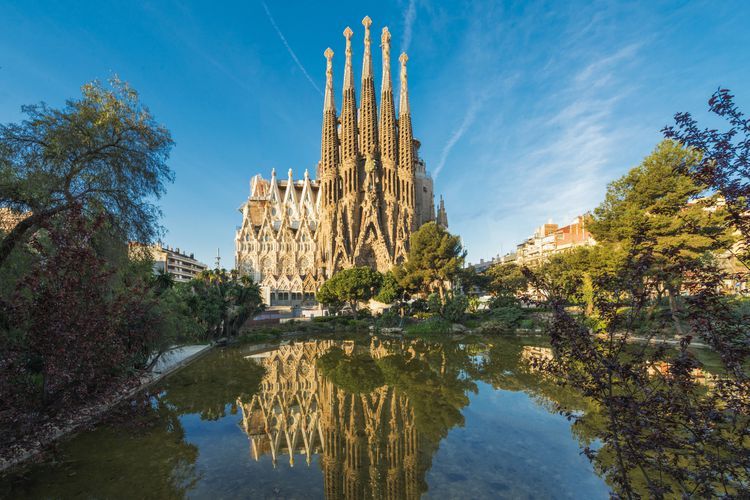
9. The famous grid pattern of l’Eixample was not well-received at the time
The designs of architect Ildefons Cerdà, who was responsible for the Eixample (meaning expansion in Catalan) project which would extend the city beyond its medieval walls, were highly criticized at the time. Today, the octagonal blocks – which focused on facilitating the flow of traffic, allowing sunlight and ventilation to come between the buildings – and gridded pattern of the project are applauded for their ingenuity.
10. It’s said that Barcelona is even older than Rome
That’s right! Barcelona’s perfect location on the Mediterranean makes it an ideal place for settlers. Although the exact dates of the earliest settlements remain unclear, there are ruins that have been found dating earlier than 5000 BC. There are two different legends surrounding how Barcelona was founded.
11. There are abandoned train stations in the city
If you count both metro and train stations, there are about 12 that are abandoned, or not in use. Why do they exist? These stations have been retired either because of new additions or changes made in the tracks. Some of these abandoned stations include Gaudí station, Correos, Banco, and Travessera in Gràcia.
12. La Rambla is actually 5 streets combined
The famous tree-lined pedestrian in Barcelona is also sometimes called Las Ramblas because it is made up of smaller sections. These are Rambla de Canaletes, Rambla dels Estudis, Rambla de Sant Josep (or de les Flors), Rambla dels Caputxins and Rambla de Santa Mònica.
Las Ramblas, from the statue of Christopher Colombus, photo via @msubirats
13.
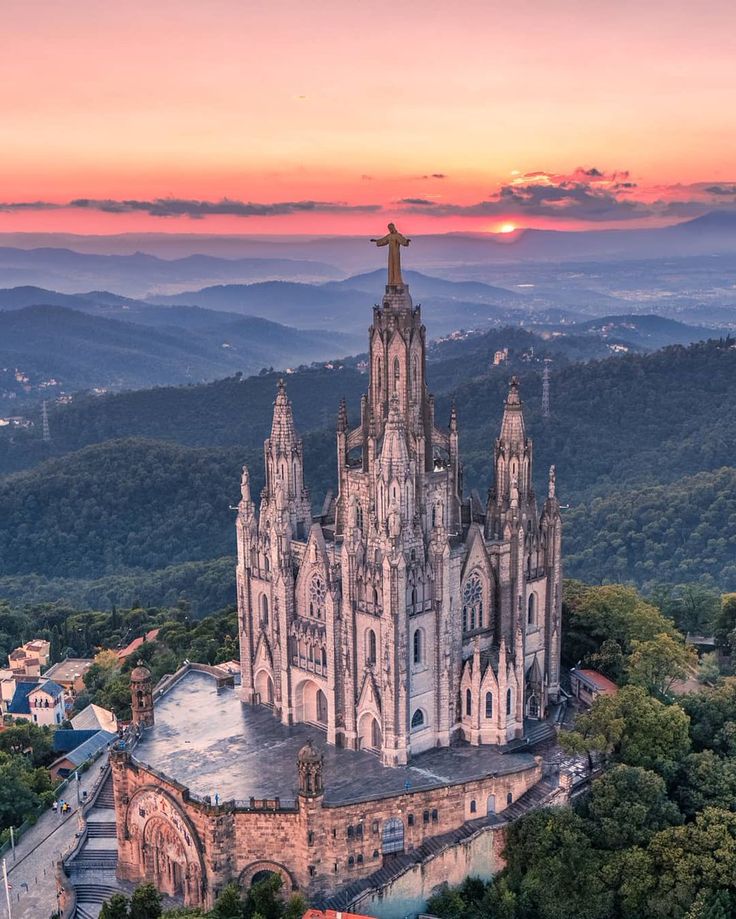
If you talk to someone who grew up in Barcelona before the Olympic Games in 1992, they will tell you that Barcelona lived “with its back to the sea”. Barcelona’s history and location as a port city made it very industrial and many of the factories were located on the shore. Once Barcelona knew it would host the Olympics, the cleanup and beautification of the seaside became one of the most important projects. In fact, some of the beaches are artificial as sand was brought from abroad to create the popular beaches of today.
14. Barcelona was offered the Eiffel Tower before Paris
Rumour has it that Gustave Eiffel and his team made a bid for their design to be accepted in Barcelona for the World Exposition of Barcelona in 1888. Apparently, the city rejected the offer, fearful that the large tower would be an eyesore on the city’s skyline and residents would disapprove.
15. Barcelona is full of air raid shelters
Because of the Spanish Civil War that went on from 1936 to 1939, there were as many as 1400 bomb shelters built within the city of Barcelona and more in surrounding areas.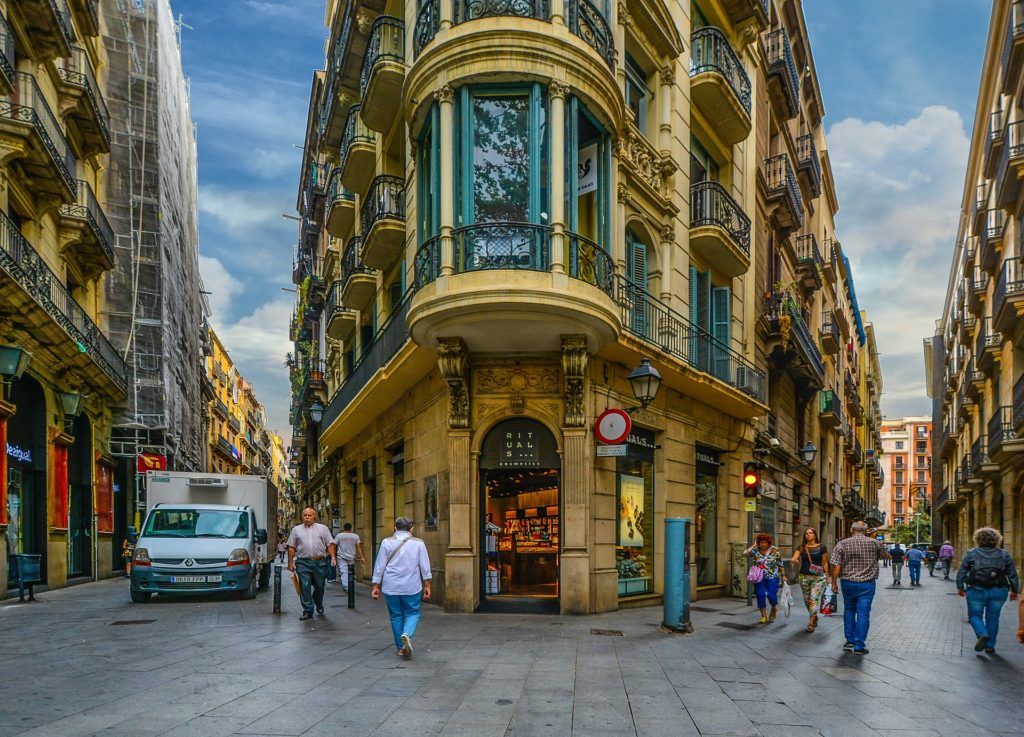
The most interesting facts about Barcelona
Barcelona has always attracted attention. And this is not surprising. This is a beautiful city that welcomes guests cordially, is ready to demonstrate its best places, swirl in the carnival and treat with famous culinary dishes.
Surely many people find it useful to know interesting facts about him.
Founder
Until now, disputes about who founded Barcelona do not stop.
There are two official versions:
-
one by one, Hercules became the founder. This happened four centuries before Rome was founded;
-
according to another, it was Hamilcar Barca, the father of the great Carthaginian commander Hannibal.
It happened in 133 BC. And the city was named Barcino in honor of his family.
The Place of Antoni Gaudí’s Creation
As you know, there are many buildings here, built according to the designs of the Catalan architect, who became famous throughout the world – Antonio Gaudi. Many of them have become architectural monuments that not only Catalonia, but the whole country is proud of.
La Sagrada Familia was his most grandiose creation in terms of scale and duration. This is an impressive Roman Catholic church, the construction of which has not yet been completed. It is scheduled to be completed by 2026.
The Casa Mila house, created according to his project, still does not require air conditioning. And all because the ventilation system was flawlessly thought out.
Spanish Capital of Culture
At different times, world-famous artists worked in Barcelona. Here, the works of Joan Miro, Pablo Picasso, Salvador Dali, Antonio Saura, Enrique Tabari and many others saw the light of day.
In addition to Gaudi, many architects worked here. Per Falquez, Luis Domenech and Montaner are the most famous of them.
Nowadays, many artists live here. The most famous are the great tenor Jose Carreras and the soprano Montserrat Caballe. These singers, along with Placido Domingo, organized charity concerts to donate all the money for the restoration of the Liceo opera house that burned down in a fire in 1994. Now it is considered the most luxurious in Europe.
Beach City
A rather interesting fact is that until 1992 there was not a single beach here. They began to equip only for the Olympic Games.
At the moment, the length of the beaches is about 4.5 kilometers. They have become the same attraction as many monuments of history and architecture.
The beach of Sant Sebastia, located in the historical part of the city, is considered the cleanest.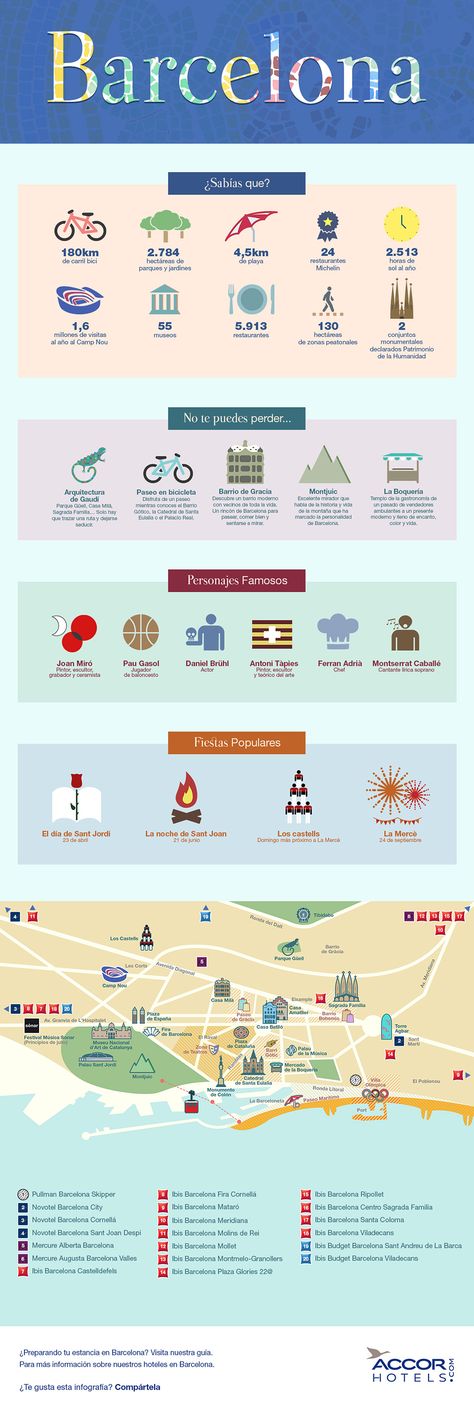
By the way, every year before the start of the beach season, all the sand is sifted to a depth of half a meter.
The most popular place among tourists
This is the Barri Gotic (Gothic Quarter), located in the center of old Barcelona. More than one million foreign tourists visit it every week.
Formed by medieval streets, it combines ancient churches, houses of the Catalan nobility and merchants, and numerous museums. Tourists are attracted by monuments built during the Roman Empire and the Middle Ages.
Most visited place
Interesting is the fact that the most visited place is the Camp Nou stadium. It belongs to the favorite of Barcelona – the football club of the same name. Capacity – 100 thousand people.
FC is the pride of not only Catalonia, but the whole of Spain. He helped restore the church of Santa Maria del Mar.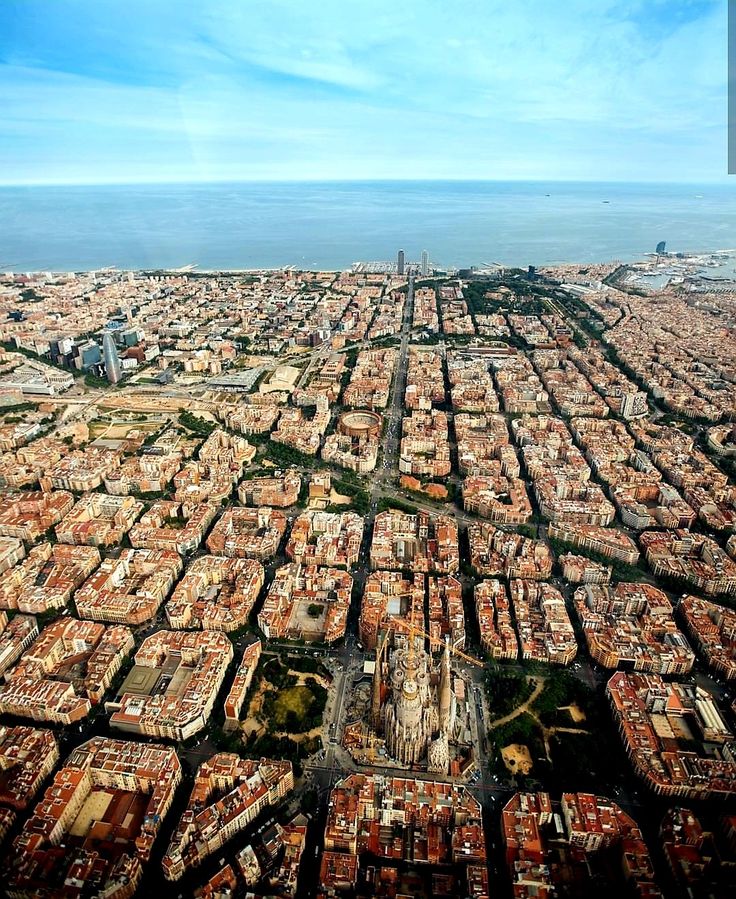
Montjuic Park
Barcelona is also home to the largest park in the country, Montjuic. It is one of the largest parks in Europe, since its area exceeds 200 hectares.
Popular drinks
The Catalans, like all the inhabitants of Spain, prefer wine from all drinks. A special pride is the sparkling wine Kava. According to experts, it is in no way inferior to the famous French champagne.
Beer is also loved here and over 100 varieties of intoxicating drink are produced. And for his admirers, once a year, in March, there is a festival.
Visit a wonderful country by applying for a Spanish visa at Diplomat-Consulting.
Was this information helpful?
Thank you! We will be happy to help you with questions related to Spain!
your comment
22 interesting facts about Barcelona
Spanish Barcelona enjoys, to put it mildly, wide international fame.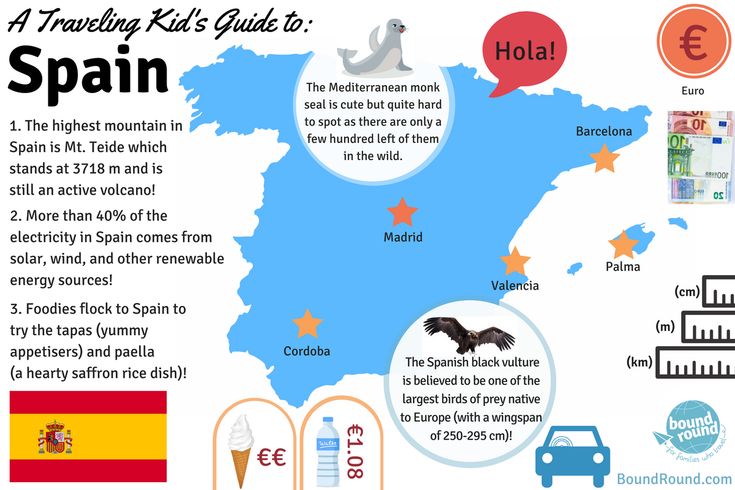
has a unique feature: the one who once visited it, as a rule, “gets sick” Barcelona and after
returns to the capital of Catalonia more than once. And everything, in the end, begins to seem familiar and familiar to such a “barcelophile”, however, believe me, Barcelona always has something to surprise.
In this article, we have compiled a selection of facts about Barcelona that not everyone knows about. Many of these facts will surprise you, some will please you, and some may even outrage – but certainly not
will leave you indifferent! So, the most interesting and unusual facts about the city of Barcelona!
It seems that not a single person in a sober mind and sound memory can even imagine Barcelona without beaches. In the Catalan capital today there are 9 excellent beaches, and “excellent” –
no exaggeration: otherwise Barcelona would not have received the title of “Best Beach City” (Best Beach City) in a survey organized by National Geographic.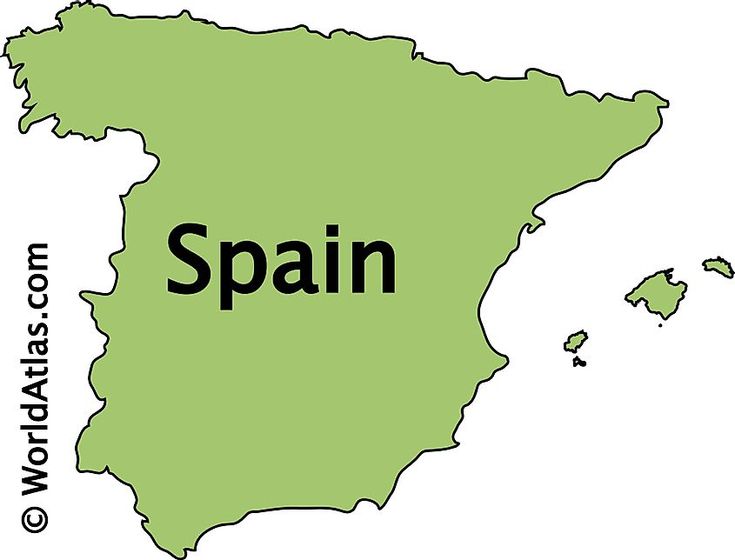
As local residents who regularly use these very beaches, we responsibly declare: the beaches in Barcelona are really worthy, as far as it is possible in principle for Spain. Of course you need
remember to be vigilant, given that Barcelona thieves operate with enviable activity on the beaches – “otherwise, beautiful marquise, everything is fine, everything is fine!”
However, just imagine, until 1992 in Barcelona, a wonderful Mediterranean city, there was not a single, even the most seedy beach! An end to this egregious outrage was put by the preparation
to the Barcelona Olympics-1992, when the city authorities finally took care to give Barcelona a decent look and not lose face in front of the international community.
We add: the beaches in Barcelona are their own, but the sand is imported from Africa. Therefore storm Gloria, “peeping in”
to Barcelona at the beginning of 2020 , pretty much reduced its quantity, and had to massively import sand again.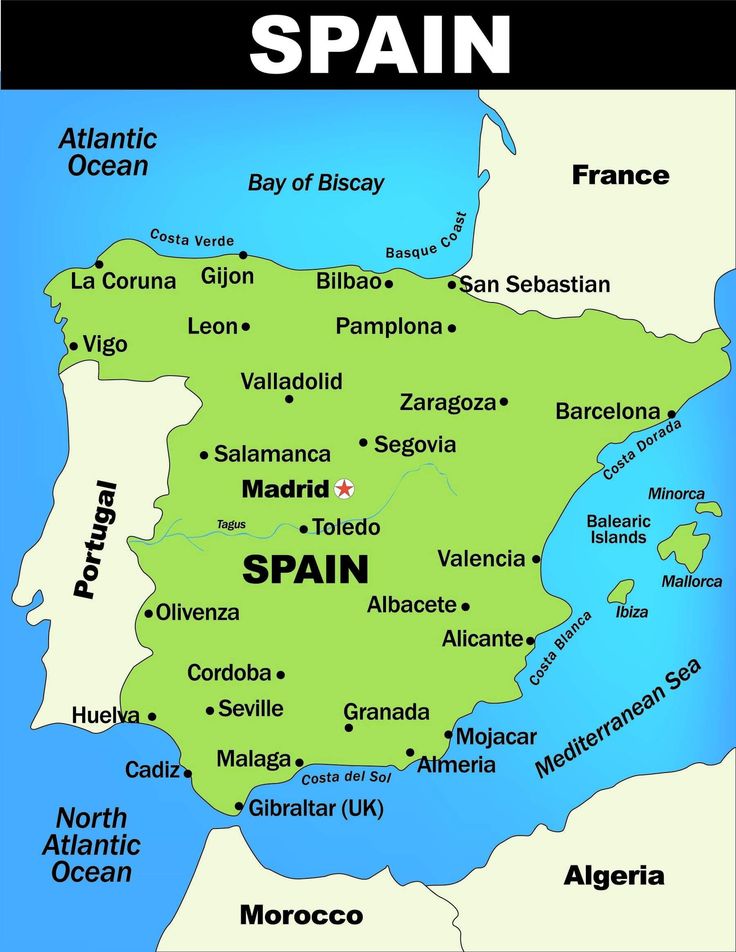
Yes, even though Barcelona may not seem big to a resident of Moscow, Beijing or New York, the fact remains: the capital of Catalonia is the largest city in the Mediterranean. Barcelona occupies,
it seems to be a very small area of 102 square kilometers, but on this area, lives, no less, about 1,650,000 people.
As for the Barcelona agglomeration, here we reach a completely outrageous figure: 4,600,000 people, which makes it one of the largest in Europe.
In Barcelona proper, given its small territory and the large number of people living in this territory, the population density is on average 16,000 people per sq km, which, again, makes
Barcelona is not only the largest, but also one of the most populous cities in the Mediterranean. In particular, we ourselves like to call Barcelona “the smallest of all the huge
cities”.
Yes, here, as they say, neither subtract nor add: today Barcelona is the largest and busiest cruise port in Europe and one of the largest in the world.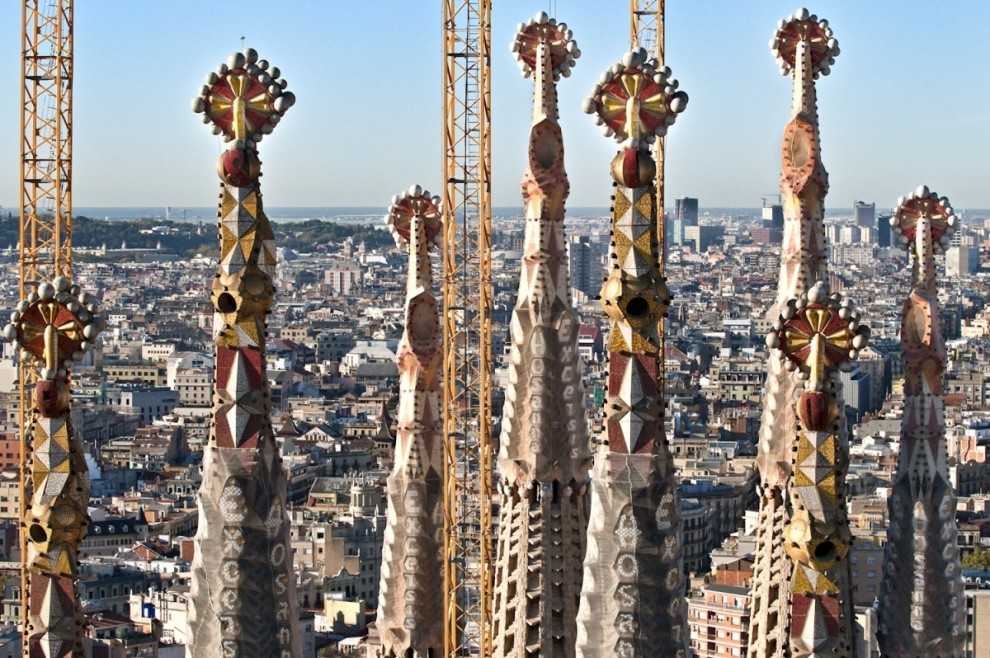
7 giant terminals where the largest cruise ships in the world land, including Oasis of the Seas, Allure of the Seas and Harmony of the Seas – and, as a result, about 4,000,000 passengers,
passing through the Barcelona cruise port.
Yes – while we’re on the subject of justified boasting, it’s worth mentioning that Barcelona is the most visited city in Spain – and one of the most visited in Europe.
According to statistics for 2019 (for obvious reasons, we do not consider 2020), 11,977,277 tourists registered in the city’s hotels, each of which spent an average of 195 euros per day.
The number of overnight stays for the same year was 33,000,000.
Multiplying these numbers together gives us the clearest idea of how important the tourism sector is to Barcelona and Catalonia as a whole. It would be nice if this was not forgotten in the City Hall
Barcelona!
I know that many will not believe me. How can the mayor of a city whose economy relies heavily on tourism to an unprecedented degree “dislike tourists”? Alas, this is the truth.
Ada Colau, for vague, senseless and merciless reasons, does not really have a special love for the “breadwinners” of the city of Barcelona.
In 2020, Ada Colau had a heartbreak: for all the well-known coronavirus reasons, tourists never made it to Barcelona – and thus she had no one to “dislike”.
The result – a ruined economy, boarded up hotels, hungry queues, a rapid increase in unemployment. Such metamorphoses happened to our beautiful city due to the absence of those whom it does not love.
Ada Colau. I would like to hope that this sad and illustrative picture will force the city ruler to reconsider her views – however, to be honest, there is little hope for this …
The only albino gorilla in the world, nicknamed Snowball, adored by everyone without exception and was the main pride of the Barcelona Zoo (of course, because in
there has not been, is not, and probably never will be another albino gorilla in the whole world), died almost two decades ago, but still has not received official recognition from urban
authorities.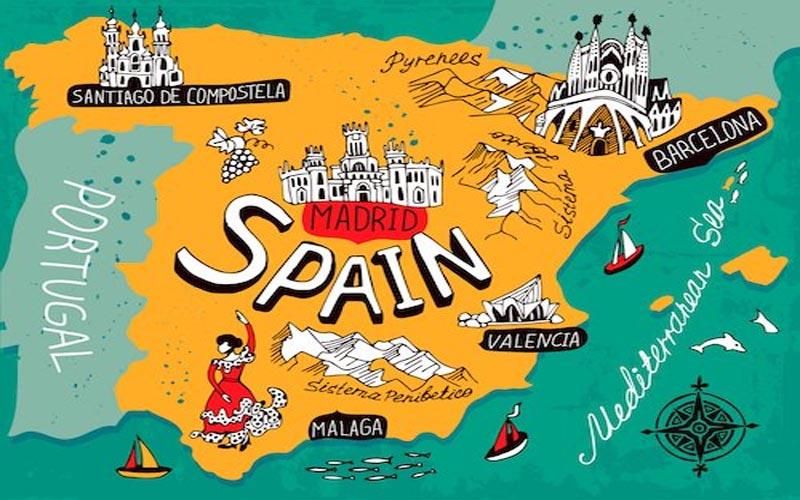
Snowball settled in Barcelona in the autumn of 1966 and spent the first 11 months at the home of veterinarian Roman Luera, an employee of the Zoo, where he spent most of his time
courted by Roman’s wife, Maria Gracia.
Together with this family that sheltered him, Snowball even managed to visit Mount Monsen and get to Menorca – but this was his first and last vacation with a trip. Next, Snowball entered
the zoo of Barcelona, the main attraction and the real king of which was until November 24, 2003 … read in full
It all started when, in 1927, the Barcelona Publishers’ Union decided to establish its own holiday to promote literature in Catalan. Initially, the date of the holiday was chosen on 7
October, but two years later, in 1929 (at that time the Second International Exhibition was held in Barcelona), the book publishers decided to combine this holiday with Saint George’s Day (April 23) , who is the patron saint of Catalonia.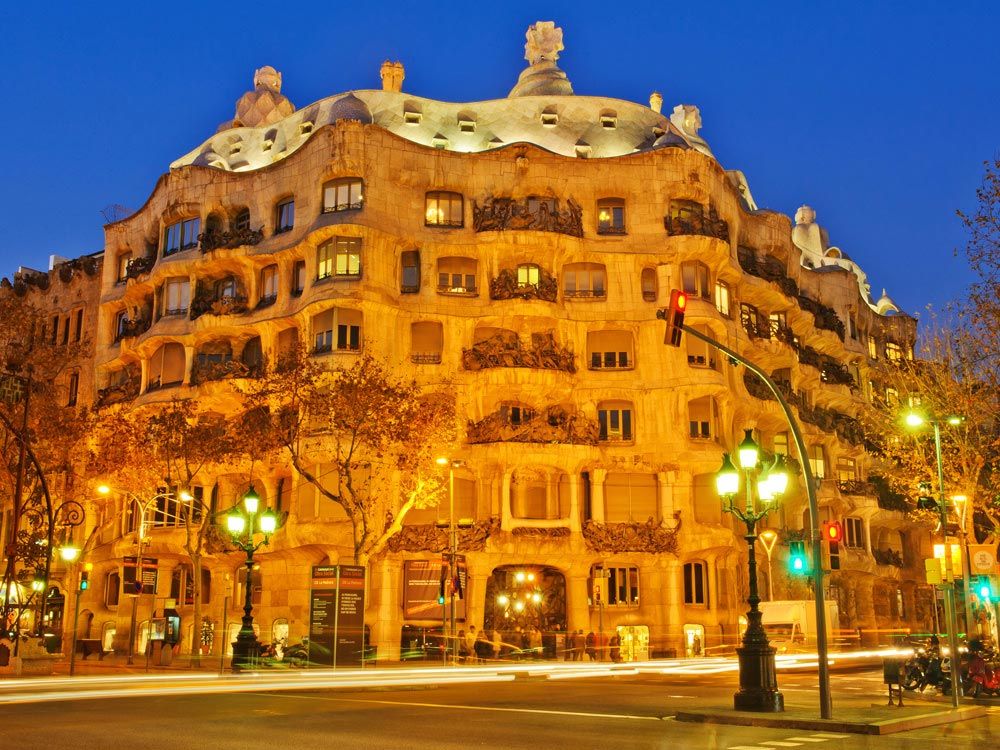
Reasons for such a “transfer”? Quite understandable: having arranged a book fair on such an important day for Catalonia, there is no doubt that sales will “go wild” – after all, in combination, in
In Catalonia, Saint George’s Day is also Valentine’s Day (this is the Catalan equivalent of Valentine’s Day). And lovers, as you know, give each other gifts.
Since then, every year on April 23, Barcelona turns into a huge book fair, and in addition to the rose that a man traditionally gives to his beloved, there is also a book that his beloved
bestows on his chosen one. However, no one bothers him to add a book to the rose – so it’s good for everyone: lovers, booksellers, and rose sellers.
By the way, the people of Barcelona chose the fact that on this day in 1616 two of the greatest writers died on April 23: William Shakespeare and Miguel Cervantes. Subsequently
it turned out that both died on the other day, but it was too late: envious of the Barcelona book festival, UNESCO in 1995 declared April 23 World Book and Copyright Day.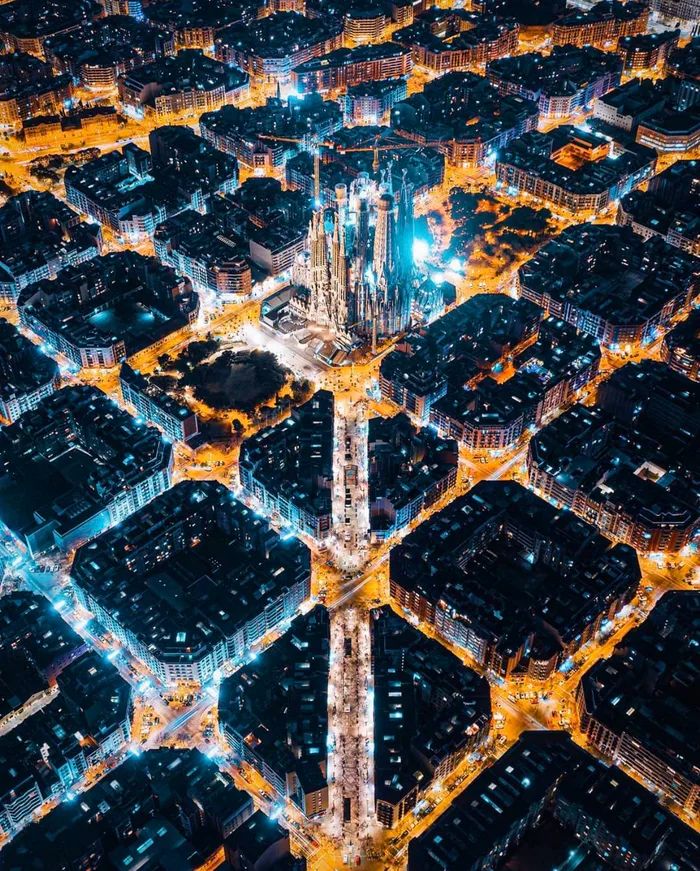
when he actually died there is not so important.
Yes, one of the hypotheses regarding the date of the founding of Barcelona, without false modesty, claims that this happened not just a long time ago, but oh, a very long time ago: 400 before the founding of Rome. Concerning
founding father, it was also not just anyone, but Hercules himself, in certain circles known as Hercules. Yes, Hercules! Just Hercules – although, again, no documentary evidence
this hypothesis, for obvious reasons, does not exist.
However, especially patriotic Barcelona residents are sure that this is exactly what happened! Being engaged in the exploits of Hercules, who had managed to pretty much annoy him, it so happened that he reunited with
Argonauts led by Jason, who plied the Mediterranean Sea in search of the Golden Fleece. Further, in this way, they “furrowed” together – but not for long … read in full
Yes, once again we are embarking on the path of unbridled, but fully justified boasting.
Camp Nou, aka Nou Camp, the home stadium of FC Barcelona, covering an area of 55,000 square meters, can accommodate 99,354 people and is not only the largest
football stadium in Europe, but also the second largest in the world after Rungrado May Day Stadium in Pyongyang, North Korea.
Yes, the days when monuments and fountains were dedicated to Little Red Riding Hood in Barcelona are gone. Now she is an outcast. Actually, not only “Little Red Riding Hood”!
The list of forbidden books in Barcelona in 2019 included “Snow White and the Seven Dwarfs”, “Sleeping Beauty” and many other masterpieces that countless generations of children around the world have grown up on.
the world.
Why? In Barcelona, feminism is a hugely popular movement, and any reasonable idea, as we know, is easily reduced to the point of absurdity. In the heat of the fight for gender equality, “Little Red Riding Hood”, in fact,
and died – as a work of exclusively “machista”, “sexist” and infringing on the rights of women .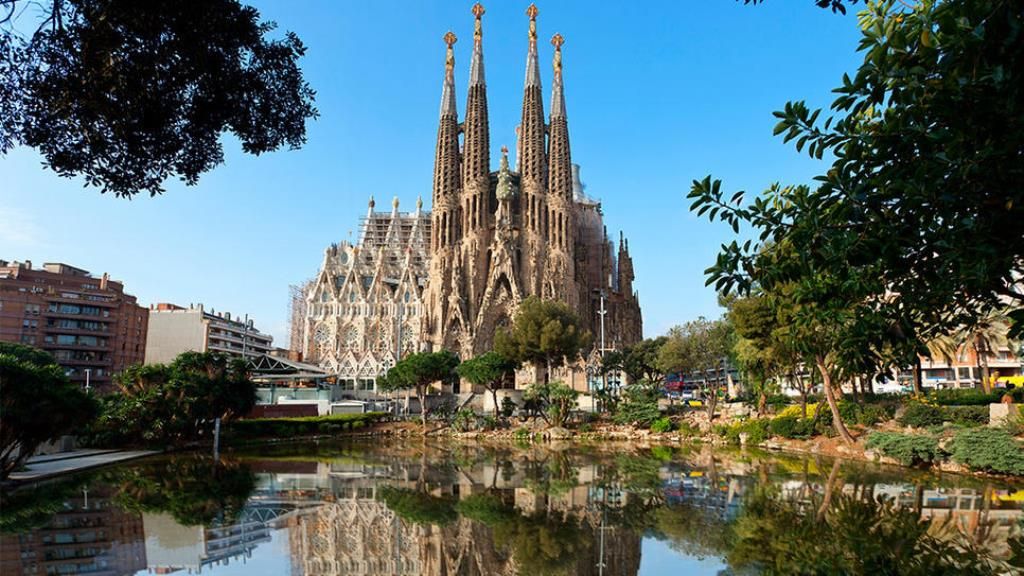
completely
Sometimes we all want to treat ourselves to something culinary that is sure to be remembered for years to come, and Michelin-starred restaurants are the best way.
do it.
Fortunately, Barcelona in this respect has something to be proud of. Only the best products, the most famous chefs and real masterpieces of haute cuisine, whose merits have been praised by the most famous
culinary guide in the world – more than 20 restaurants in Barcelona have one, two, or even three Michelin stars! .. read more
With 84.65 km², the Collserola Park in Barcelona is the largest urban park in the world. For comparison, it is 22 times the size of New York’s Central Park!
Yes, 9 UNESCO sites for one city – this, you see, is not bad at all! Two of them belong to the works of the outstanding Catalan modernist architect Luis Domènech y Montaner.
Hospital of the Holy Cross and St.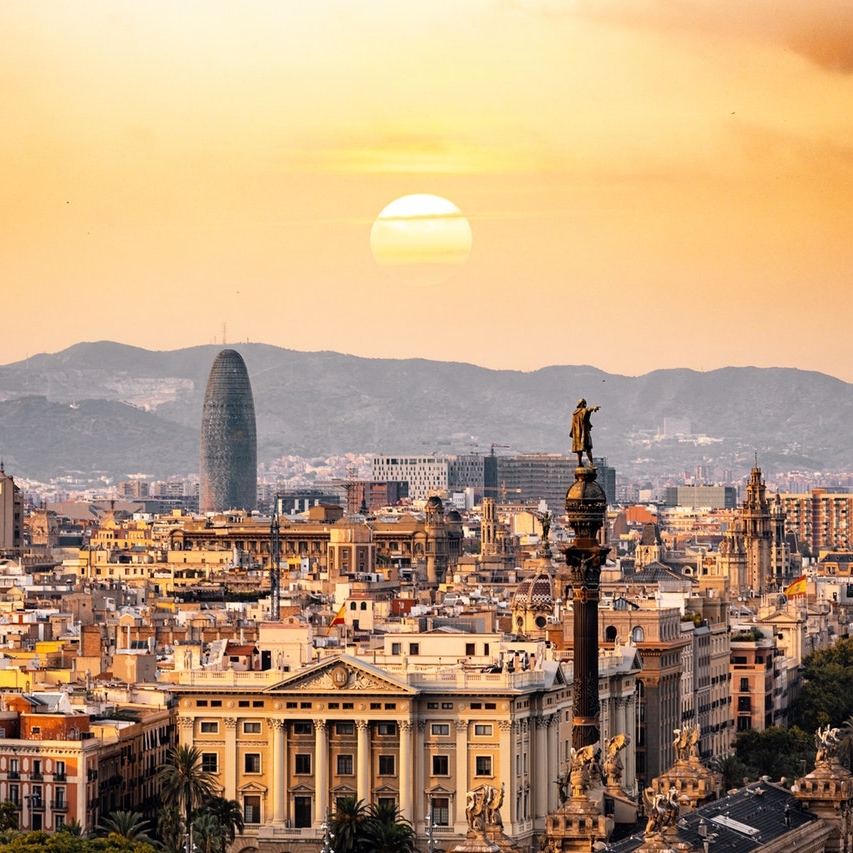
And the remaining seven, as you probably already guessed, are incomprehensible, unearthly and completely immortal creations of the unforgettable Antonio Gaudi : Park Güell, Güell Palace, Casa Batllo, House Mila, House Vicens, Sagrada Familia (Sagrada Familia) and Crypt in Colonia Güell .
ANTONIO GAUDI – EXCURSIONS
Yes, this is a rather curious fact: Barcelona really has not one, but two patron saints! And this is not counting all the other saints, whose intercession the city actively used.
during different periods of its history! For example, everyone knows the Matrona of Moscow, but no one remembers the Matrona of Barcelona – because the people of Barcelona have long forgotten about her. But this is by no means
cancels the fact that once the Matrona of Barcelona was “appointed” to be responsible for the well-being of the people of Barcelona – although, as we see, she “did not work out.
The first “main” Barcelona saint, whose cult has safely reached our days, was Saint Eulalia , whose relics are kept in the Cathedral of the city. However, in the 19th century, Eulalia had
an unexpected “competitor” in the person of the Virgin Merce, or Our Lady of Mercy, who in 1868 acquired the official status of the patroness of the city.
Despite such a “late start”, the cult of Virgin Merce quickly
became extremely popular and even overshadowed the veneration of the former sole heavenly intercessor of Barcelona – Saint Eulalia. That is why during the magnificent celebrations of Merce, it is sure to rain in Barcelona – they say that Saint Eulalia sheds bitter tears of resentment at the fact that the townspeople
love Merce more than her.
Barcelona has given the world many famous personalities, among which Ramon Mercader is not the last place – a Barcelona resident, by order of the NKVD, or rather, Stalin himself, who physically destroyed the “enemy
Soviet Union No.
However, in the USSR, where Ramon Mercader, who had fully served a 20-year prison sentence, lived the last years of his life, he was known under a different name: Ramon Ivanovich Lopez, Hero of the Soviet
Union. But it all started in Catalan Barcelona… read in full
Yes, despite the classic associative series: Spain = Bullfighting = Flamenco, neither Spain, nor bullfighting, nor flamenco are popular in Barcelona, and throughout Catalonia. Yes and
For what?
Instead of flamenco, we have a sardana (a national round dance in Catalonia), and instead of bullfighting, we have football and demonstrations, smoothly flowing into the burning of garbage containers. Seriously, then
bullfighting is generally banned by the decision of the Catalan Parliament and has not been held in Catalonia since the fall of 2011.
On the other hand, the absence of a passionate love for “too Spanish” flamenco among the locals does not mean at all that there is nowhere to watch and listen to high-quality flamenco in Barcelona.
forget: Barcelona is a tourist city oriented towards the interests of “external consumers”, and therefore the Catalan capital is full of places where you will be offered an eminently worthy show.
And if, in addition, you have experience and knowledge in this matter, in Barcelona you can visit not only a high-quality, but also quite budgetary show. If you are going to Barcelona – contact us,
be sure to prompt “appearance-passwords”.
Linking Plaça Catalunya to the heart of Gothic Quarter , the Portal of the Angel is the street with the highest rental rates for retail space in Spain – in 2018, for example, the price
rent amounted to 3360 euros per square meter.
This figure was a whopping 120 euros higher than that of the closest “competitor” – Madrid’s Preciados Street, according to an information report.
“Maim Streets Across the World” published by Cushman & Wakefield Real Estate.
The report analyzed price performance in 65 countries around the world, and thus the Barcelona Portal of the Angel, being the most “biting” in
rental price in Spain, ranked 18th in Europe and 67th in the world.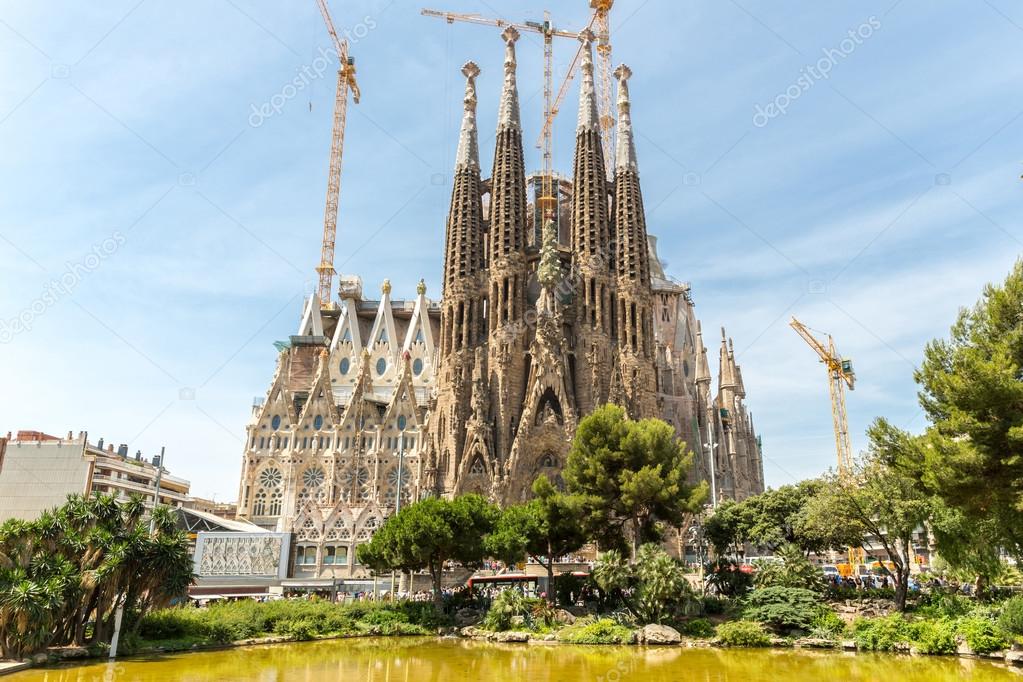
Well, or, at least, “moderately wild” – after all, we live in Europe! However, the fact remains that wild boars from the Collserola park not only feel great in the park itself,
but they also willingly visit the lower zone of the city, sometimes reaching the Plaza de España (probably to listen to Singing Fountain
Barcelona) – and even to the beaches! These are, let’s say, not some simple wild boars, don’t understand from what forest – these are the famous City Boars of Barcelona ! ..read more
Barcelona – in itself – is not at all a “stronghold” of the Catalan independence movement, contrary to popular belief, which is regularly fueled by disturbing reports in
periodicals and a bright picture of TV news.
In fact, about two-thirds of the population of Barcelona are not at all obsessed with the ideas of secession from Spain, and the City Council has never had a majority advocating secession from the Kingdom.
such an image?
In fact, everything is simple: firstly, Barcelona is the capital of Catalonia, and all the regional Catalan authorities (just in favor of secession from Spain) are concentrated here. Second, Barcelona
the only truly large city of Catalonia, which has worldwide fame. Where else to manifest if not here? And thirdly, where else can you find so many garbage
containers that can be safely incinerated?
Returning to the question of the notorious independence – its real “stronghold” is located in the Catalan hinterland, which begins 50 km from the capital. So, surrounded by harsh nature, in places
beautiful, wild and wildly beautiful, inhabited by real patriarchal Catalans who have nothing to do with metropolitan glamor – and it is on them that the Great Catalan Idea rests.
Also, by the way, the most interesting fact: one of the most powerful supercomputers in the world is located in the Catalan capital, and not just anywhere – but in the former church of the Barcelona villa Torre Girona, where he was
installed back in 2004, and since then has gone through several “upgrades”.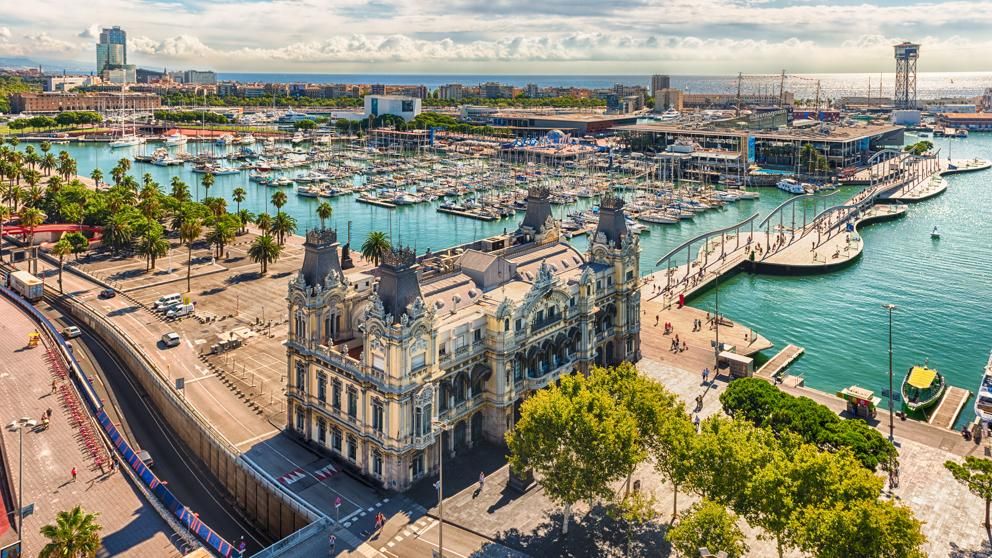
The computer is called Marenostrum, and the number of employees of the BCC (Barcelona Computer Center) located nearby, compared to 2004
increased 10 times. Today the BCC employs more than 600 people – highly qualified specialists from more than 40 countries of the world.
By the way, this fact did not escape the attention of the famous novelist Dan Brown. In Brown’s novel “Origin”, the main action of which takes place precisely in Barcelona, the Barcelona
the supercomputer, “living” in the temple, also found a place.
Barcelona, despite its very compact size, boasts that 14 of the 20 longest streets in the Kingdom of Spain belong to
to her.
the longest street in the whole Kingdom is Barcelona’s Gran Via de les Corts Catalanes, which has a length of
more than 13 kilometers and house numbering going up to the impressive number 1198!
Yes, this is another fact that will seem unexpected to many: the “bird face” of Barcelona is determined by not well-fed, self-sufficient and lazy pigeons (of which there are also enough in the Catalan capital) and
not large marine predators like gulls and other cormorants, now and then arriving in the center of Barcelona to feast on pigeons.

 It happened in 133 BC. And the city was named Barcino in honor of his family.
It happened in 133 BC. And the city was named Barcino in honor of his family.

